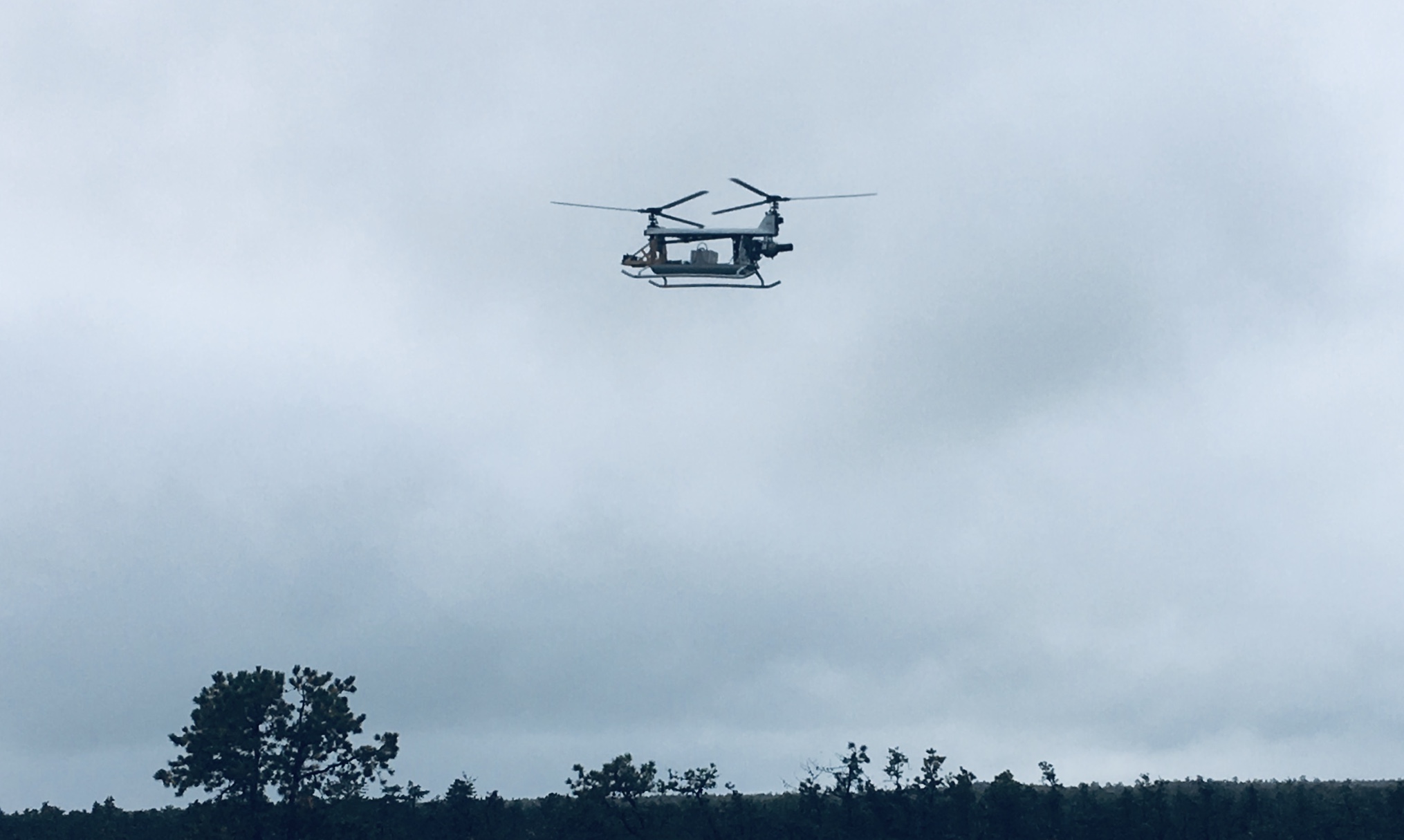DP14- Hawk A Remote Control Supply and Rescue Unmanned Aerial Vehicle
What began as a way to capture better aerial images for Hollywood has, more than 25 years on, become the face of the new and growing field of unmanned aerial reconnaissance and transport.
Aviation pioneer Michael Piasecki, however, said the story goes back even further, to 1945, when Piasecki’s father, Frank, piloted the second successful helicopter flight in the United States.
In partnership with the U.S. Coast Guard, Frank and his team also flew the first military tandem helicopter in the U.S.—the world’s largest helicopter at the time.
Safe to say, the younger Piasecki’s interest in helicopters started early. A self-described grease monkey, he spent his early years climbing in and out of helicopters, taking them apart and putting them back together. But it wasn’t until 1992 that Piasecki was able to turn his passion into a full-time business: Dragonfly Pictures Inc.
At first, Piasecki said, the company built stabilized remote camera systems, along with small unmanned helicopters that could lift the cameras into the sky, helping directors get better aerial footage.“As we got more interest in the products, we were asked to lift heavier and heavier loads, so we developed unmanned helicopters that would navigate autonomously and be much easier to fly than manned helicopters,” Piasecki said.
As the products grew, so did outside interest, most notably from the U.S. military. Dragonfly’s equipment was novel in its scale, precision, and ability to handle large loads, which gave it great potential for military application. Piasecki’s first inkling that the company had a winning product line came in 2004, when Dragonfly was selected by the Defense Advanced Research Projects Agency (DARPA) to design a UAV that could find targets and laser-designate those targets for remote weapons, as well as perform communications relay and find hidden landmines.
Out of this came the DP-5X Wasp, what the company termed a “long-range tactical multi-mission UAV”—a product that could simultaneously fit in the bed of a Humvee and carry a 100-pound payload.
But that system, which looks like a miniature version of a normal helicopter sans cockpit, was just the beginning. Over the following decade, Dragonfly scored some 20 SBIR contracts from DoD, according to Piasecki, for everything from biometric recognition (for identifying humans at night or in adverse terrain) to extended communications, working with NASA, DARPA, Boeing, Northrop Grumman, Harris Corporation and Carnegie Mellon, among others. “Over the past years, we’ve migrated away from imaging, which was the genesis of the company, and are now more focused on areas such as the communications relay for extending the range of robots from ships, or delivering small-units logistics like food, water and medicine in austere environments,” the owner said. “Those SBIRs have allowed companies like mine to raise millions for product research and development.”
That pivot appears to be a timely one. The military has said publicly that UAV technology represents the future of military logistics and health care.
Gary Gilbert, research manager of the Army’s Tele-medicine and Advanced Technology Research Center, said that unmanned vehicles could be the key to providing medical support without risking further casualties, particularly in high-consequence landscapes. “The growing planned use of unmanned systems and robotics on the future battlefield affords both great opportunities for medical force multipliers as well as significant operational medicine and medical research challenges,” Gilbert wrote in a recent Army release. “In situations where medical resources are already spread thin, e.g. during a mass casualty event or natural disaster scenario, mobility of medical resources becomes of paramount importance. Unmanned systems could serve as a force multiplier for medical operations in future environments as their capabilities continue to evolve and mature to include providing medical logistics support, aid in the delivery of telehealth to the point of care, and provide opportunities for expedited casualty evacuation.”
The culmination of this tech for Piasecki’s team came in the form of its DP-14 Hawk, a dual-rotor UAV that can fly at more than 100 knots, carry up to 430 pounds, and can drop a payload within a three-meter radius. According to Dragonfly, the system is primarily a vehicle to offer autonomous resupply to medics on the ground, as well as retrieving injured soldiers.
“It will be extremely useful for medics who are widely dispersed and have difficult access,” Piasecki said. “It will give them better tools to save lives in the field.”
Released in 2017, the DP-14 Hawk has already been featured as the model UAV in a study conducted by NASA, in coordination with the University of North Dakota, that examined the design requirements of such systems for use in cargo delivery scenarios.
But Piasecki said the company isn’t standing still, and has secured an SBIR from NASA to develop a system for precision pesticide spraying for agricultural application. “The SBIR program really allows small companies like mine to innovate,” he said. “Overall, it has really accelerated the democratization of technology.”
For any questions on the Video One Sheet, please email: info@mediamarketingconsultants.com
Back Home
